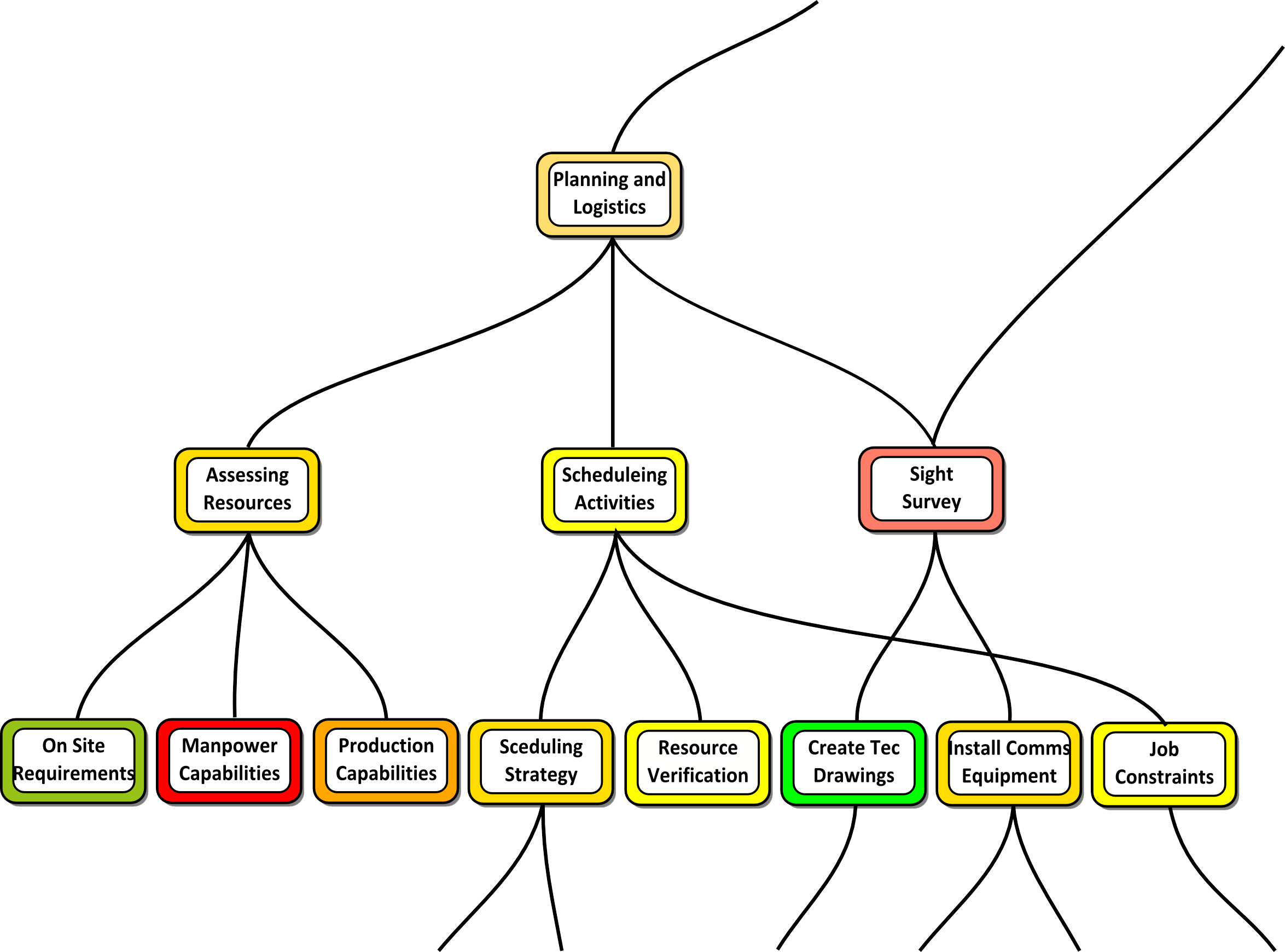

Knowledge Structure Mapping
Knowledge Structure Mapping is a method designed to help managers visualise and evaluate that part of the organisational knowledge resource which is held by staff. It concerns the knowledge that people need in order to carry out activities on behalf of the organisation. The method is relatively simple and a specialised tool has evolved over many years to assist in building the visualisation, analysing the results and presenting the findings.
This figure shows a section of a typical Knowledge Structure Map. The top node shown is that of Planning and Logistics (for a particular company). It was said by experts at that company that an expert in Planning and Logistics would be expected to know how to 'Assess Resources', 'Schedule Activities' and conduct a 'Site Survey'. The map also shows the knowledge dependency in a little more depth. For instance, an expert in 'Assessing Resources' must know and understand 'Manpower Capabilities'.

The method, Knowledge Structure Mapping, is useful for business and organisational knowledge studies and a map would typically contain between 80 and 200 knowledge nodes.
Smaller studies of around 20 to 35 knowledge nodes are useful to explore a concept or an idea and can also be extended if the idea looks fruitful.
The method and tool also caters for larger maps if an organisation wishes to see an entire business human knowledge resource in context and add experts, learn times, temporal information about when knowledge is needed and more.
Smaller studies of around 20 to 35 knowledge nodes are useful to explore a concept or an idea and can also be extended if the idea looks fruitful.
The method and tool also caters for larger maps if an organisation wishes to see an entire business human knowledge resource in context and add experts, learn times, temporal information about when knowledge is needed and more.
The study team comprises of an interviewer (KSM expert), a knowledge leader (domain expert) and several experts in specific parts or all of the knowledge domain being studied. This team explores the knowledge, develops the map, adds knowledge evaluation and controls the quality of the knowledge study to deliver a valuable organisational support resource.


AKRI Ltd: UK Registered Company since 2005